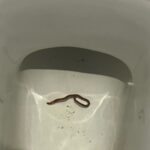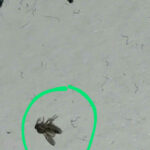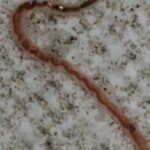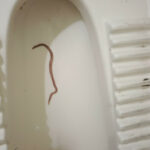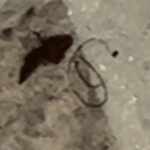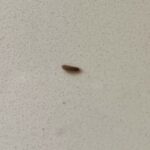Marine ragworms are not like earthworms. Earthworms live in the earth’s rich soil while the marine ragworm lives in water or near the shore. Common names for the marine ragworm include clam worm, pileworm, sandworm, and mussel worm. The marine ragworm is any group of mostly marine or shore worms of the class Polychaeta (phylum Annelida). Some species live in fresh water and they feed on other worms and small sea animals.
The ragworm can be anywhere from one inch up to three feet long. Their colors run the gamut from brown to bright red and green. According to Encyclopedia Britannica (Academic Edition):
The head bears sharp retractable jaws. The first segment of the body has two short tentacles and four eyes; the second segment has four tentacle-like cirri. The number of body segments may exceed 200. All but the first two segments have a pair of parapodia—flat outgrowths bearing bristles—used for locomotion. Gases are exchanged across the well-vascularized parapodia.
Like most worms that dwell underneath the soil, some marine ragworms have functional reproductive organs of both sexes. They may even reproduce by self-fertilization. When it is time to mate, the rear part of the ragworms body fills with sperm or eggs. The area becomes swollen until the marine ragworm leaves its shallow burrow on the sea bottom. The worm releases sex cells near the water surface, typically at night. In some ragworm species the mating occurs in the burrow. Once the eggs have been fertilized, the larva emerge from the egg. After this process takes place, the female ragworm dies.
In North America, the most common ragworm species is the Nereis limnicola. It is found on the Pacific and Atlantic coasts. Another species common to North America is N. virens. It occurs on both sides of the Atlantic and it can grow up to 31.5 inches long.
Ragworms are usually left alone by humans to live out their lives at sea or near the shore. However, some fishermen prefer to catch and use marine ragworms for bait.
Bizarre News About the Ragworm
According to a report released by the Discovery Channel, “for the first time, a structure comparable to our cerebral cortex has been found in an invertebrate — a humble marine ragworm.” Here are a few highlights:
A marine ragworm has brain structures that researchers now believe are directly related to the human brain.
Other invertebrates likely also possess the brain structures, which correspond to our cerebral cortex.
The origins of the human brain can now be traced back at least 600 million years, when we last shared a common ancestor with marine ragworms.
For more information about the human-ragworm connection, you may access the original Discovery article here:
http://news.discovery.com/animals/worm-human-brain.html
All About Worms is always free, always reader-supported. Your tips via CashApp, Venmo, or Paypal are appreciated! Receipts will come from ISIPP Publishing.



